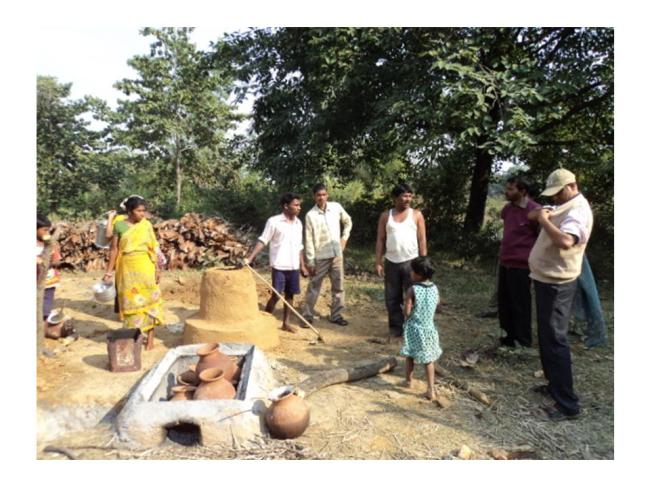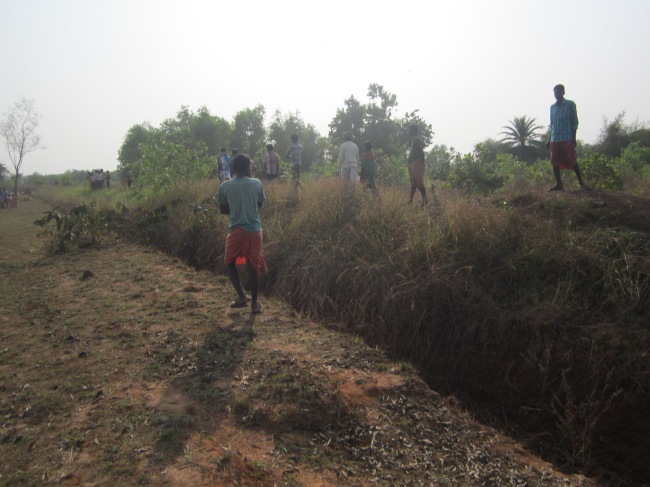Sabui-Grass: A Livelihood Option
January 24, 2014
Sabui grass or Babui grass is a known crop to the tribal since long. There are many legendary stories on this crop ,you can here these from HOs or Sabars in Chotonagapur Plateau . Bompass ,Boadings’ writings on folk lore of Santhal Parganas witness close relationship between sabui & tribal of eastern India. Similarly you can have reference to the crop from W.W.Hunter’s description on Chotonagpur. However, Sabuigrass came into light during nineteenth century when the then Government made survey on this grass for feeding their paper industry . They also attempted to its feasibility in exporting in their own kingdom,UK. A good materials on Sabui grass is found in the monograph written by D.N.Mukherjee(1908): Paper & Paper Mache in Bengal.
To Lodhas, Savars, & other tribes living on Non-Timber Forest products call this grass as ”money plant”. The grass which was abundantly grown in hills, jungles as wild is now cultivated in the Savariya territory of Mayurbhanj,Baripada of Orissa, Santhal parganas,Singhbhums of Jharkhand, Purulia, West Midnapore & bankura of West Bengal. In Mauerbhanj,the weekly hut of Dantiamuhan shows crowding for Sabai-grass business. Nayagram Block is famous for Sabuigrass . Neogi and Beligarh represent centres for sabui-trade. In those markets, raw sabai grass, sabui made twines,ropes are sold. In other occasion sabui-made artifacts are brought for selling.
Nayagram has the advantage of its territorial position as it is adjacent to Orissa and Jharkhand in terms of marketing. On the other hand, there are vast waste lands unsuitable for crops other than sabui in this block. Recently I visited the block for experiencing MNREGA -convergence schemes. However, this crop attracted me
- Sabui-grass is a traditional crop could grown in barren, infertile, up- wasteland where no-irrigation facilities exist.
- Minimum labor, zero-tillage and almost nil-capital is required to cultivate.
- Could be grown as an inter-crop with the Euclaptus plantation
- This crop will add bio-diversity, check soil erosion
- Sabui-is a fodder in dry region
- It has domestic values for making thaches,roofs,homemade twins,ropes ,brooms tec.
- Women are involved in value addition process
- Differnt kinds of artifacts are possible from Sabui.
- Tremendous prospects in Paper industry as a raw material
- Charpis-made from Sabui grass are in large demand .
- scope for Micro-& small scale industry in employment generation for tribal.
- Hilly & sloppy tracts could be brought under green-coverage in convergence with MNREGA project
Considering its importance in dry regions of Paschimanchal strategic action plans are required.
Makar Sankranti : My memory
January 14, 2014
 r sankrantiDipping in holy water at the dawn is the ritual practice of common Hindus in Bengal. People from other parts are no longer laggards in this respect. Toady , in this very Makar day , Ganga Sagar has been a leading news in media. Large crowd gives the shape the mammoth mela. Again, Ganga Sagar mela is now not limited to India but an interesting subject to Westerns. Apart from Sagar, we see such congregation on the banks of river Ganges people cleansing their sins, memorizing ancestors and hoping for future.
r sankrantiDipping in holy water at the dawn is the ritual practice of common Hindus in Bengal. People from other parts are no longer laggards in this respect. Toady , in this very Makar day , Ganga Sagar has been a leading news in media. Large crowd gives the shape the mammoth mela. Again, Ganga Sagar mela is now not limited to India but an interesting subject to Westerns. Apart from Sagar, we see such congregation on the banks of river Ganges people cleansing their sins, memorizing ancestors and hoping for future.
I recall my childhood past in Bankura & Purulia. There are no Ganges but Damodar, Kasai ,Subranarekha & other small rivers. All these streams turn to holy spots. in my native place we have no rivers . We have one holy pond. It is named BOLPUKHUR. There are many myths with this pond. The Pond is regarded as a lve-entity. The pond speaks to the holy persons. I recall that all we surrounded to the spot at mid-night ,say around 2-3 p.m. in every para there were groups who will march the place.. capture the best place . The day was the final of month drawn preparation. Straw gathering by snatching, begging or any means were the month -long preparation . Any cart load passing through street was forced to donate straw-club for Makar sankranti. The caochman of the bullock cart loaded with straw in many occasion voluntarily gave straws to the kids. however, all of us thus collected huge mass of straws. On the day of Makarsankranti, we carried those to the Bolpkukhur at mid-night. There were bon-fire. Warming the body we used to dip in the cold water of Bolpukhur. Finishing this with cheerers and louds we return to home. we are cleaned .
Gargara pitha is ready . Khejur-gur is served. all we enjoyed . there wer competition among our brothers in terms of eating Gargari-pitha. we used to count in terms of Pans.
The day is also the finishing day of Tusu. The whole month girls have devoted evenings by singing Tusu. Tusu represents clay balls mixed with cowdung & husk placed in earthen Mangal ghat. Girls dip in holy water. The bolls are immersed and return back with new clothes with singing. A festive look is found all over there.
I happened to go to Arsa and saw how Tusu was being felicitated in the banks of Kasai river. Similarly, village festival in Subrnarekha I memorize. Those days are past. I am far away.. but pitha, tusu are still vivid in my mind.
I took pithas here but these are different from Gargari.

